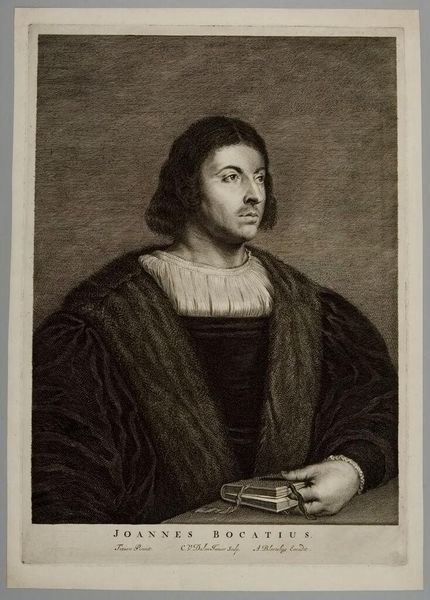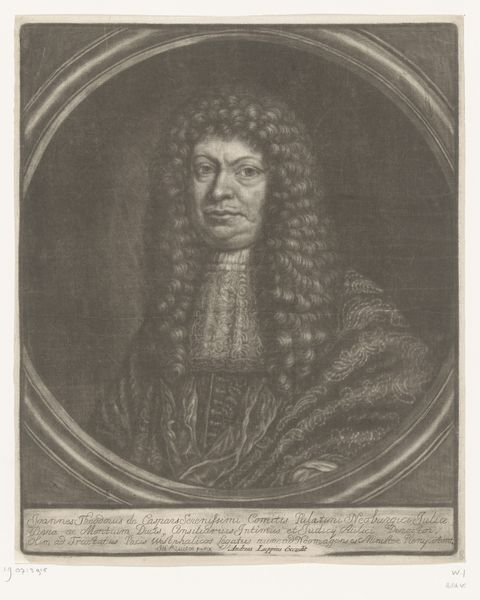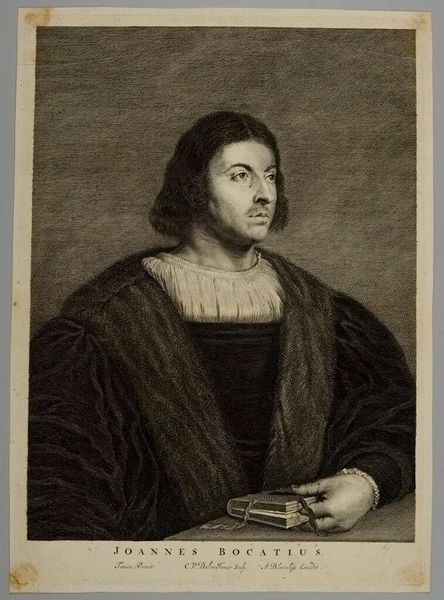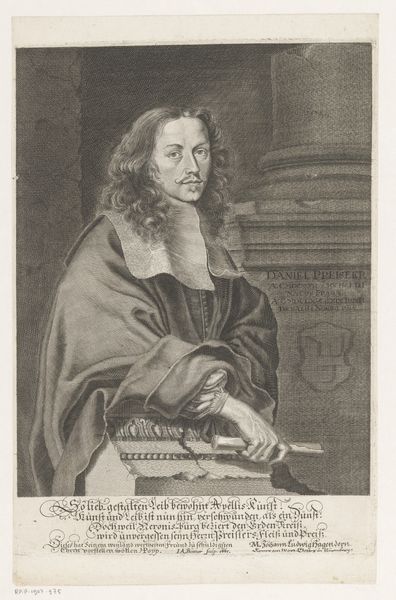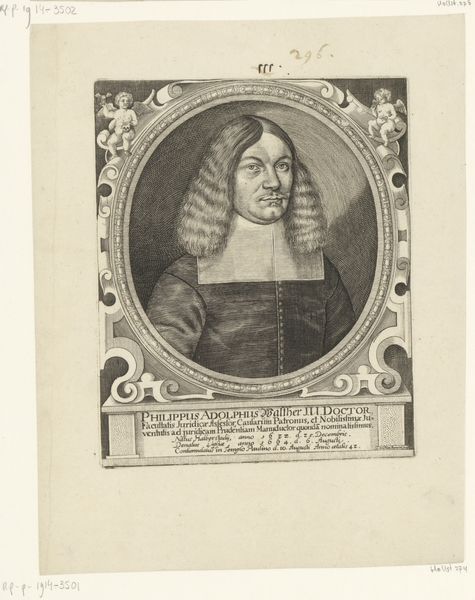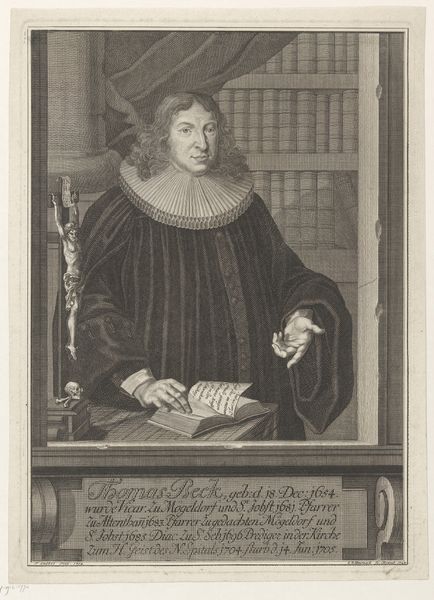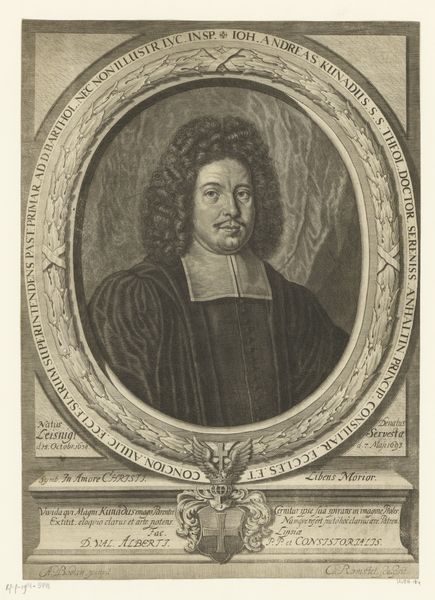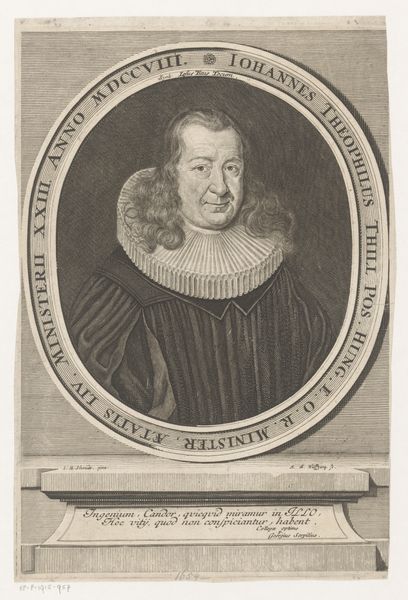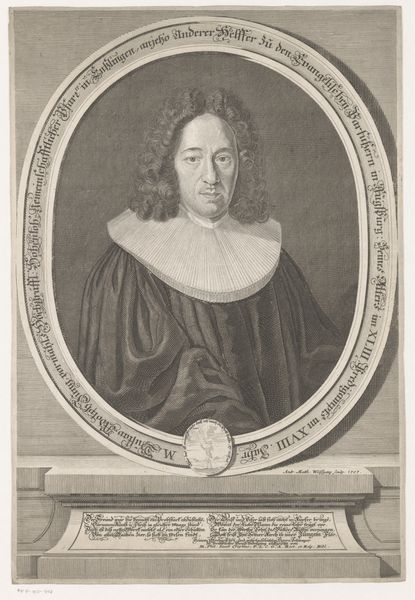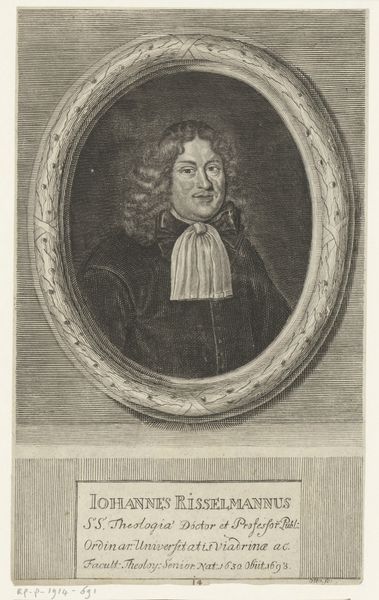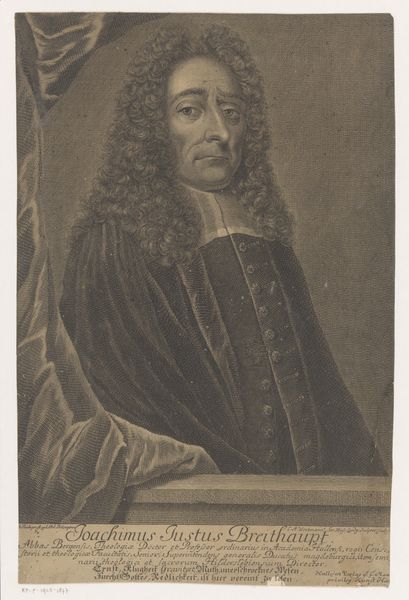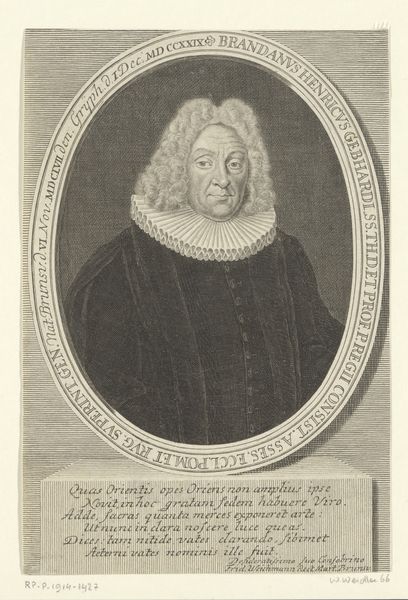
print, engraving
#
portrait
#
baroque
#
dutch-golden-age
# print
#
engraving
Dimensions: height 419 mm, width 295 mm
Copyright: Rijks Museum: Open Domain
Curator: Here we have Cornelis van Dalen the Younger's "Portret van Giovanni Boccaccio," an engraving created sometime between 1648 and 1664. The work now resides here at the Rijksmuseum. Editor: It's brooding, isn't it? So sepia-toned and serious. He looks like he's about to drop the hottest manuscript of the century and then dramatically disappear into the Tuscan countryside. Curator: The choice of Boccaccio as a subject, particularly during the Dutch Golden Age, is quite deliberate. He represents a renewed interest in classical humanism, a subject that aligned with the values of the Dutch Republic. Prints like this one served as a form of cultural capital, linking the Dutch to a broader European intellectual tradition. Editor: You're right. He’s holding a book so gently like it’s a tiny sleeping dragon. And his expression— it feels like a challenge to intellectual engagement, doesn’t it? Like he's saying, "Are you sure you're ready for this wisdom?" I’d also venture the subtle, but lush fur around his shoulders communicates wealth and standing, so more people pay attention to that wisdom, probably. Curator: Precisely. It reflects a careful crafting of persona. Boccaccio is presented as both an intellectual and a man of stature, an image Van Dalen perpetuated. Prints made art more accessible to a burgeoning middle class interested in projecting its cultural sophistication. It was all very calculated. Editor: But, you know, for all the calculation, it still kinda feels like he's judging my reading choices. The man's been dead for centuries! The detail is superb: Look at how each strand of hair seems painstakingly rendered. It makes one wonder about the meticulous patience involved in engraving. Does all of this work bring us closer to knowing the REAL Boccaccio, though? I think not. Curator: Knowing the "real" Boccaccio isn't the point; it's about the construction of an intellectual and cultural legacy. What persists here isn't necessarily historical accuracy, but rather an influential image—its role in the cultural life of the Dutch Golden Age and its enduring visual power as an object. Editor: That's fascinating, and true! Though he continues to emanate strong opinions of all who meet his gaze, centuries on. Curator: I concur; it is important to understand that beyond aesthetics, these kinds of portraits are always very effective purveyors of culture.
Comments
No comments
Be the first to comment and join the conversation on the ultimate creative platform.
